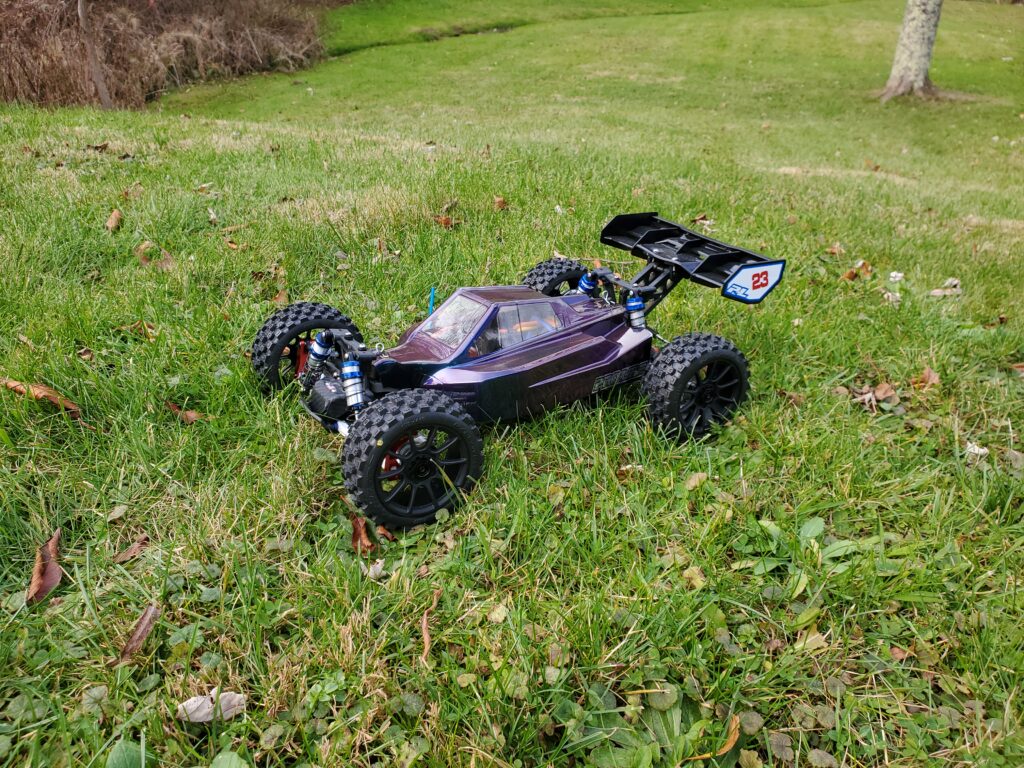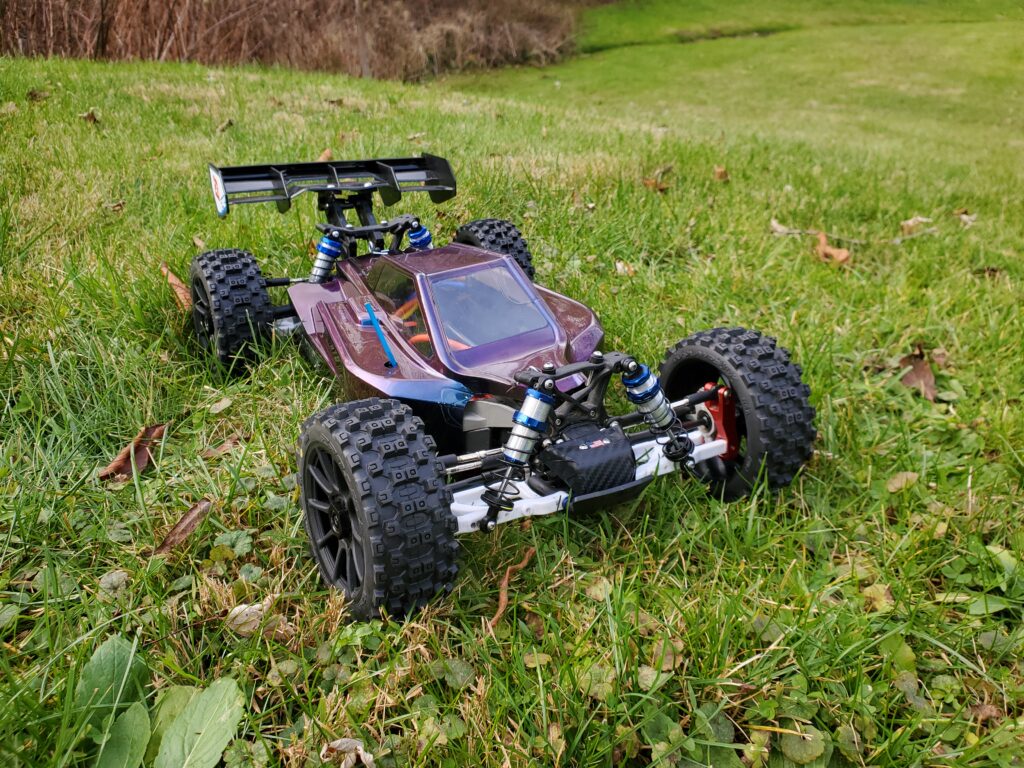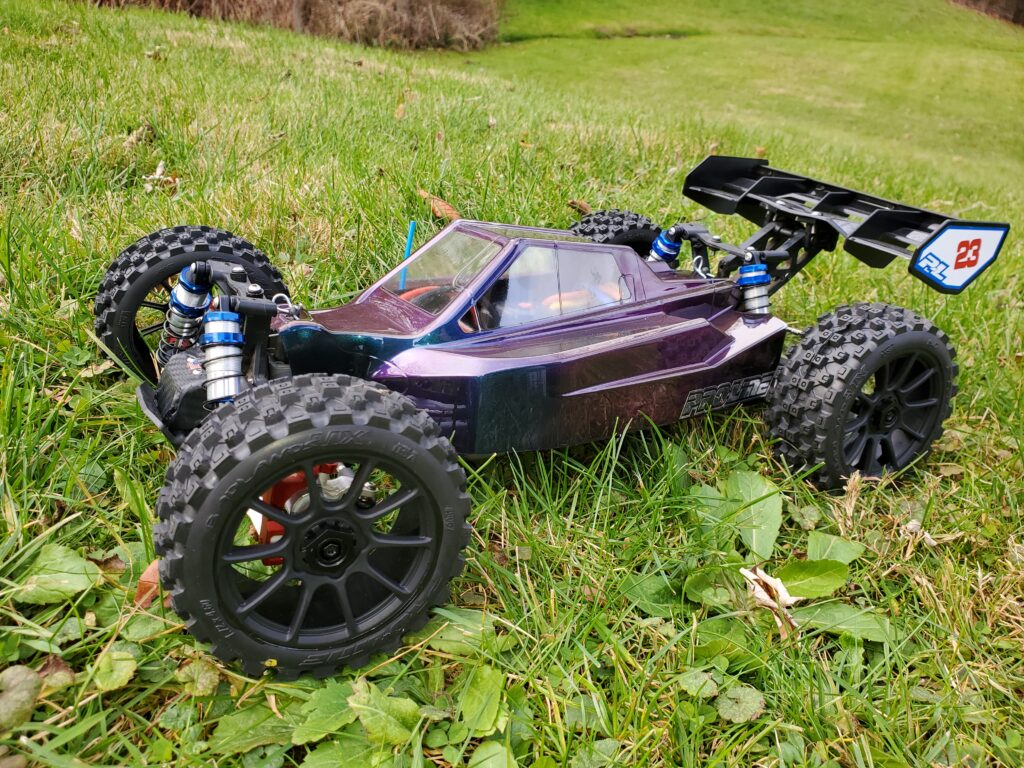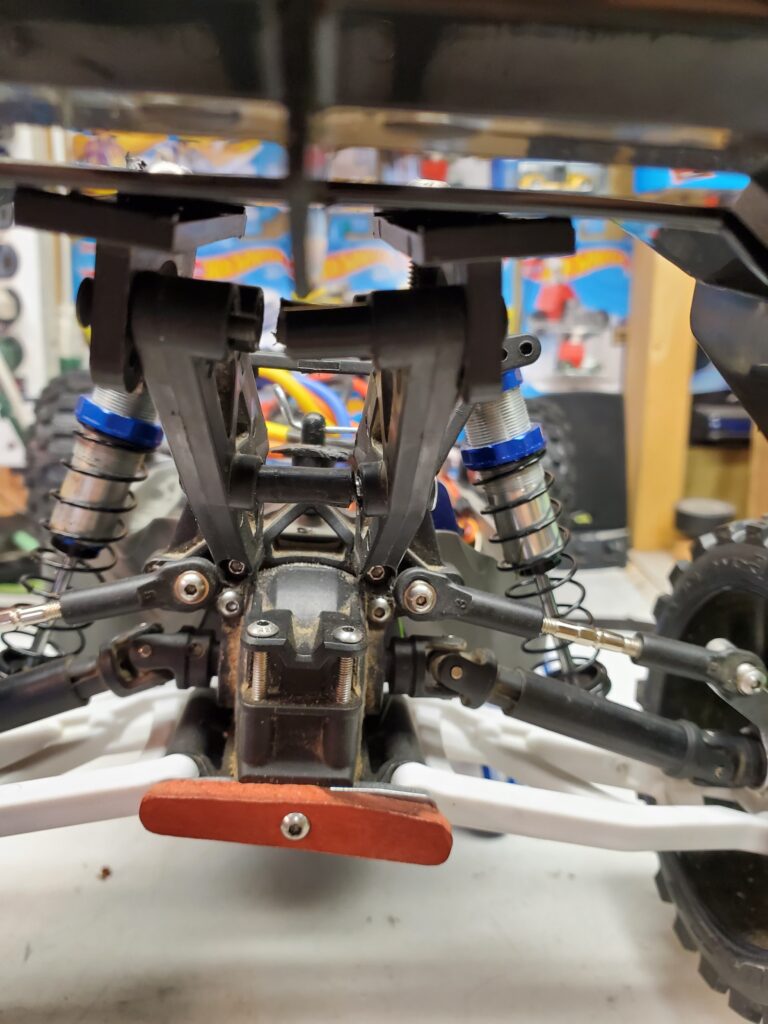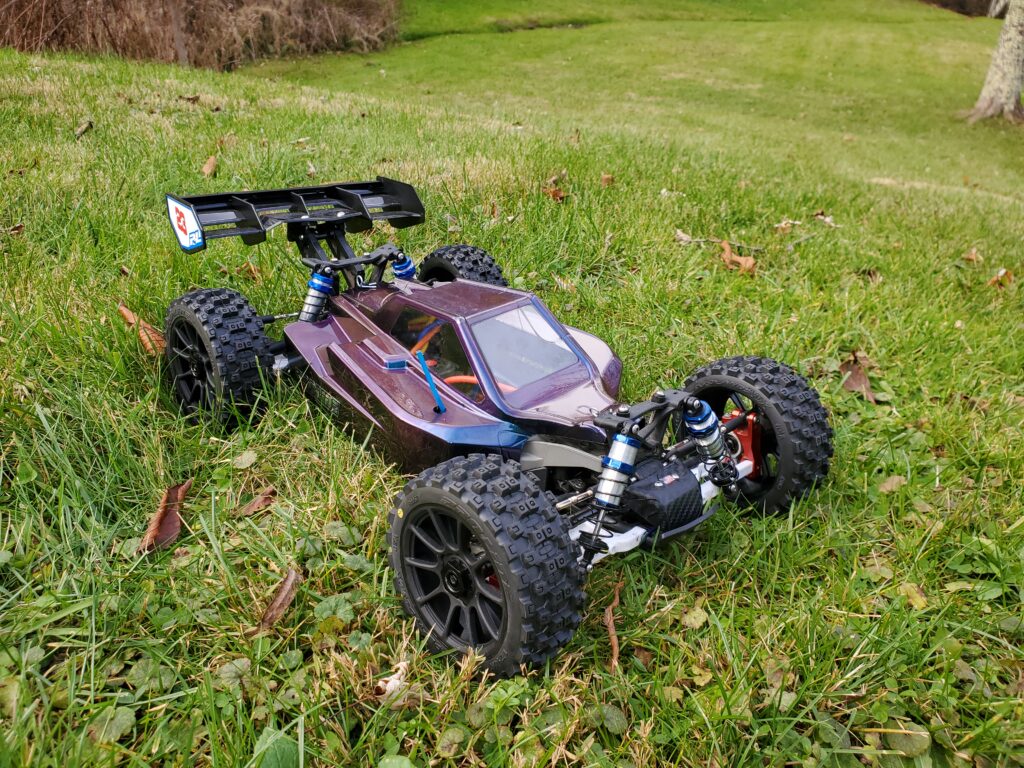
After years of enjoying the V1 setup of my BackSlash 4×4 I found some shortcomings that needed attention to bring the platform up to its true potential. During location testing for our new test facility I quickly found that keeping the car on all fours was more chore than challenge. The car spent more time on its lid than its tires, zapping the enjoyment from those two packs worth of driving and took my attention away from assessing the area and instead focused it entirely on keeping the car moving forward. Upon returning to the shop a list of changes was formulated and a plan put in place.
The biggest issue I could feel was that the car had too high of a center of gravity while not having enough suspension travel. Lowering the suspension helped the CoG but reduced travel to the point that the car would still flip very easily over the rough terrain. Every time the suspension would bottom out the car would catapult itself in a random direction at a rate that was too fast to catch. This was the easiest issue to correct; the addition of an LCG chassis from a Rally 4×4 (also available in the Slash Platinum and Ultimate editions, as well as the LCG conversion kit from Traxxas) and the relevant conversion parts needed to make the conversion work. I chose to add an STRC silver alloy steering bellcrank set to add a little weight to the nose and also help with the steering consistency. The unit that I used has an adjustable collar for adjusting servo saver tension and by using a little blue (medium strength) thread lock the collar will stay put and not loosen during a run. The bellcranks are held in place with a new RPM two-piece front bulkhead that seals the steering assembly from debris and also provides a smooth transition between the bumper and chassis plate, reducing hangups when traversing rough terrain. Providing the yank to those bellcranks is a generic 20kg-cm (277oz-in) servo with an aluminum horn.
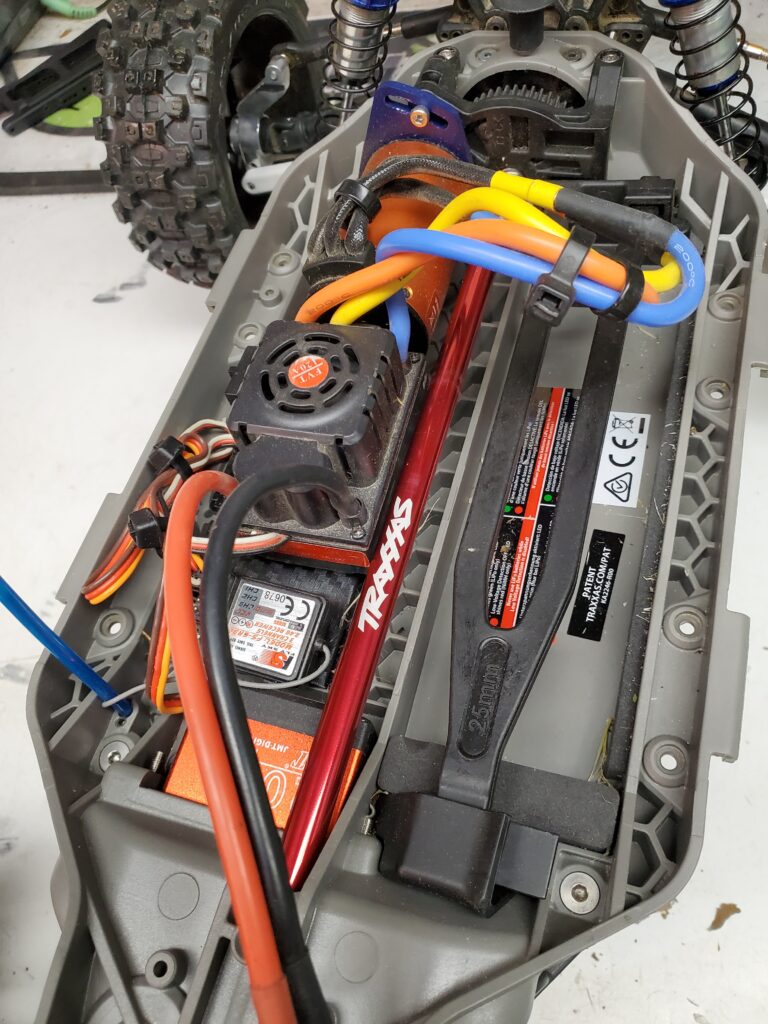
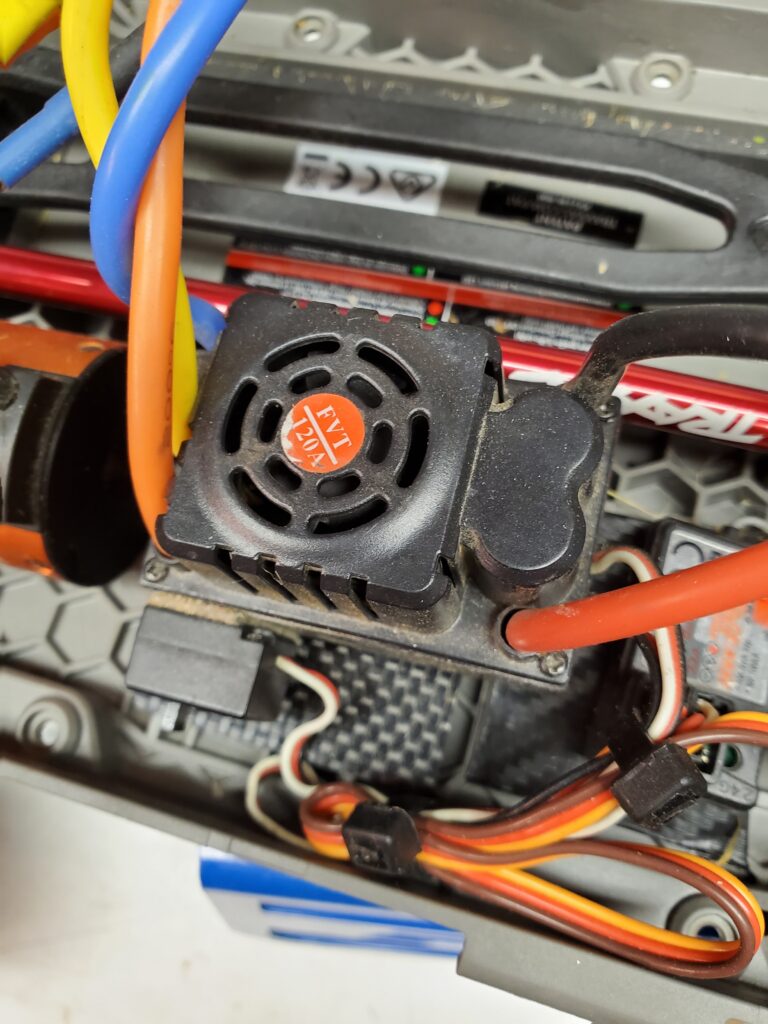
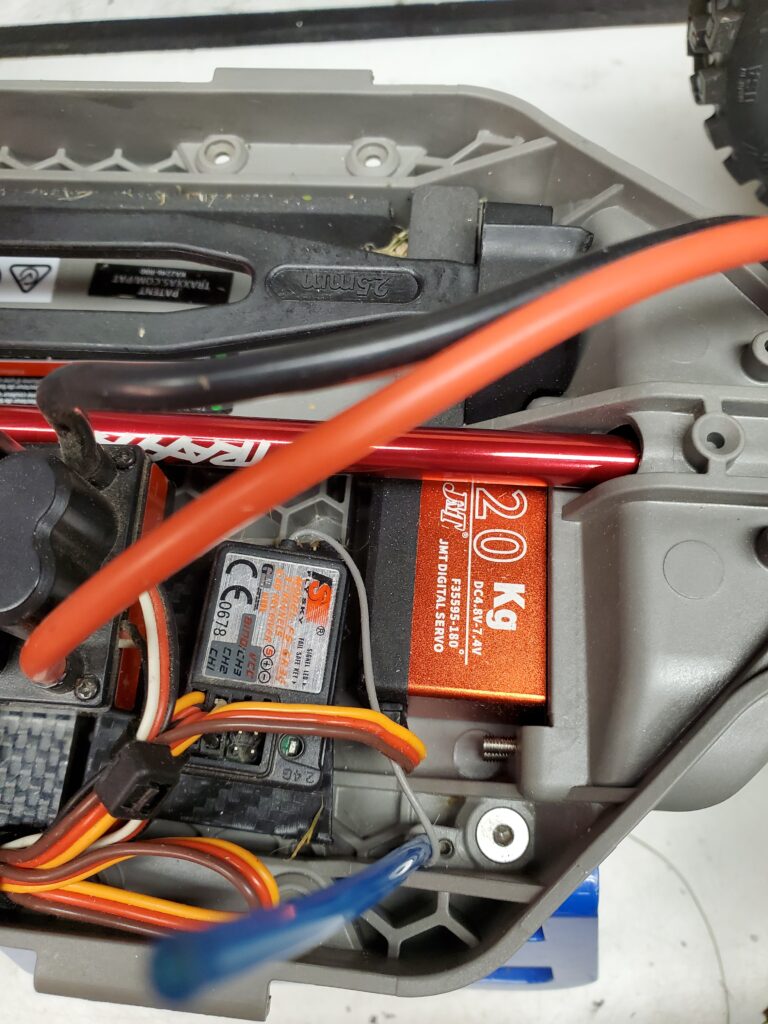
To complete the buggy transformation I chose to use Pro-Line’s new Axis body for the TLR 8ight-X along with their premounted Badlands MX tires on Mach 10 wheels. Providing the downforce in the rear is a Pro-Line Trifecta wing on an Ofna/HoBao wing mount (originally from the LX-One, but also found on many other models in their lineup). The wing mount is spaced so that the lower screw holes line up with the diff case perfectly and the upper holes get sandwiched by a plate on the front side of the shock tower. The entire assembly is surprisingly robust considering its “parts-bin-special” nature. I chose to add my own number graphics to the wing end plates but used the included PL backgraounds to provide some contrast. The Axis body fits the overall shape of the Slash 4×4’s LCG chassis quite well without being oversized or bulbous an any way. During initial testing the Badlands MX tires showed a marked performance advantage over the original Badlands (maybe because my original 1/8 Badlands are now 15 years old and made of the old XTR firm compound). Spinning the new Mach 10 wheels in the front are a set of Pro-Line Pro Spline HD axle shafts that are much stronger than stock without sacrificing rotating mass. To mount the body I simply mounted a pair of stock Slash 4×4 body posts directly to the chassis via a 4mm set screw threaded into the post and then into the chassis. This setup provides sufficient support for the body side to side while also placing the mounts at the furthest ends of the body for added stability.
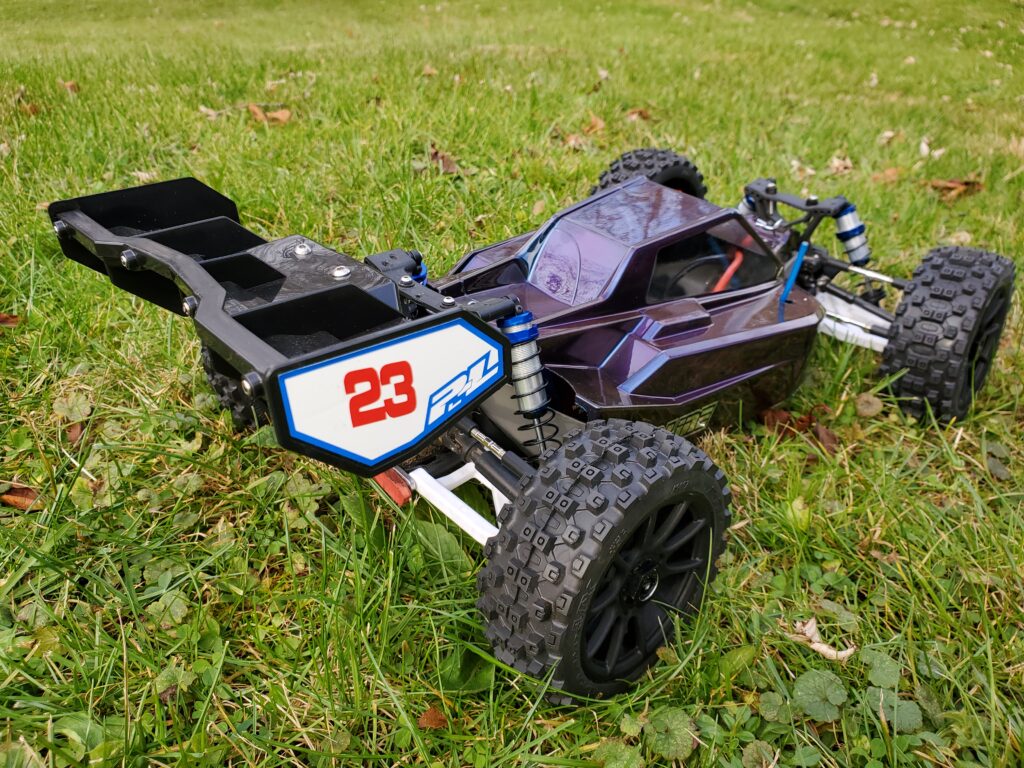
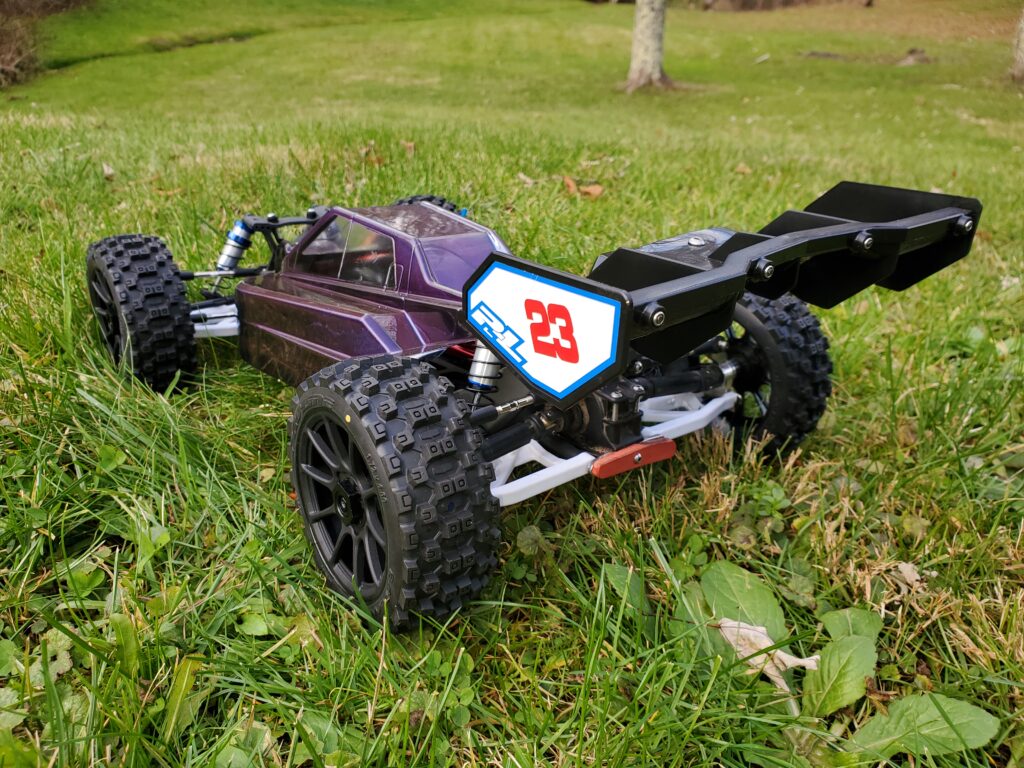
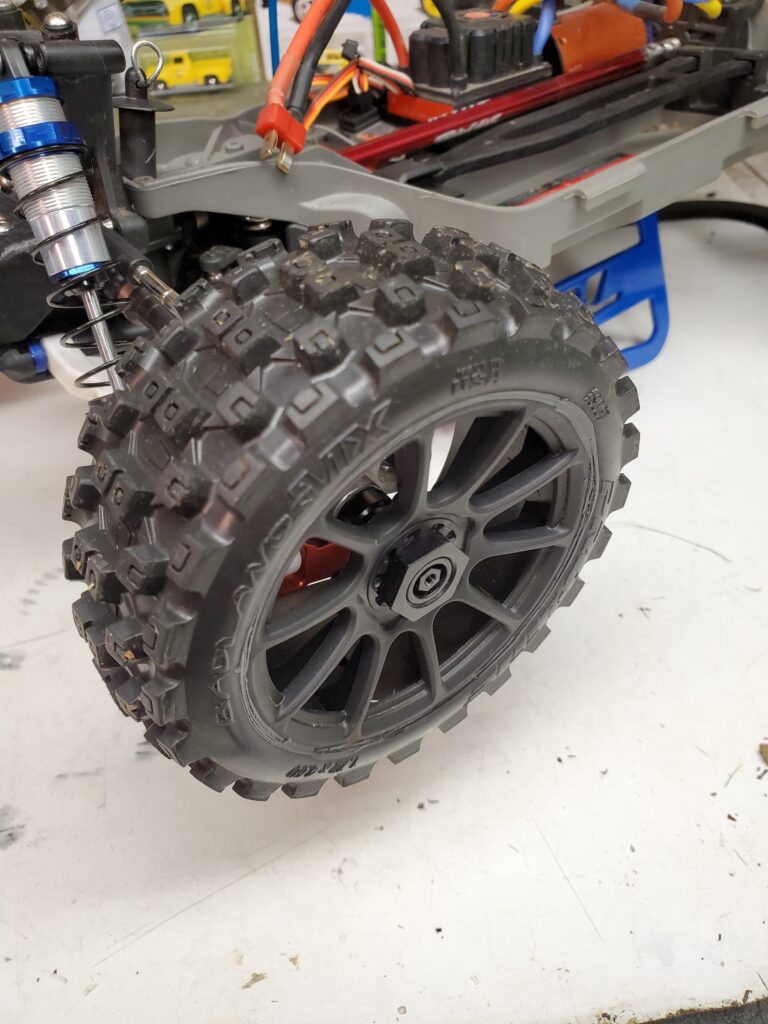
Finally, I chose to add some suspension goodies to aid in the cars handling. The stock ultra shocks had been upgraded with aluminum caps for durability and slightly stiffer springs for a “livelier” driving experience but they lacked the visual impact and instant adjustability of a threaded body aluminum damper. That “issue” was solved by the addition of a full set of Pro-Line Pro Spec SC dampers. I filled the fronts with 45wt fluid while the rear received a slightly thicker 60wt. Those shocks are mounted to the stock shock towers and Traxxas’ Cold Weather suspension arms in white. I personally like the “prototype” appearance of these arms in white and they are holding up well against the heft of the 4×4 platform. At the end of those arms are STRC alloy c-hubs in red and knuckles in silver. The rear wheel hubs are STRC silver pieces as well.
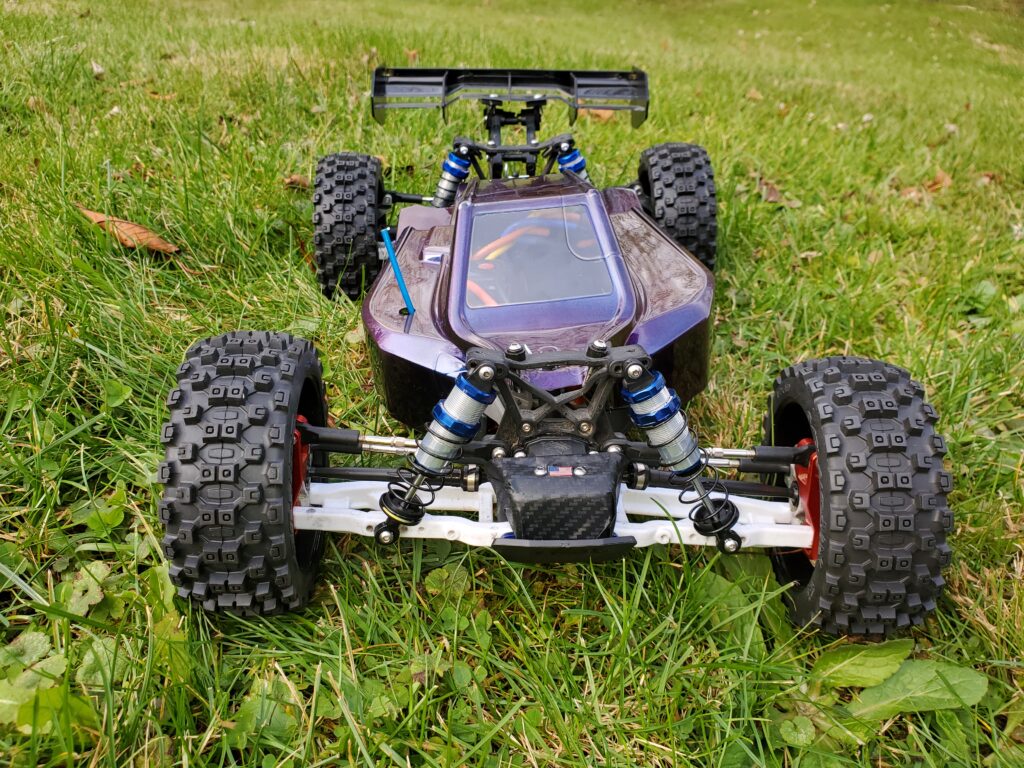
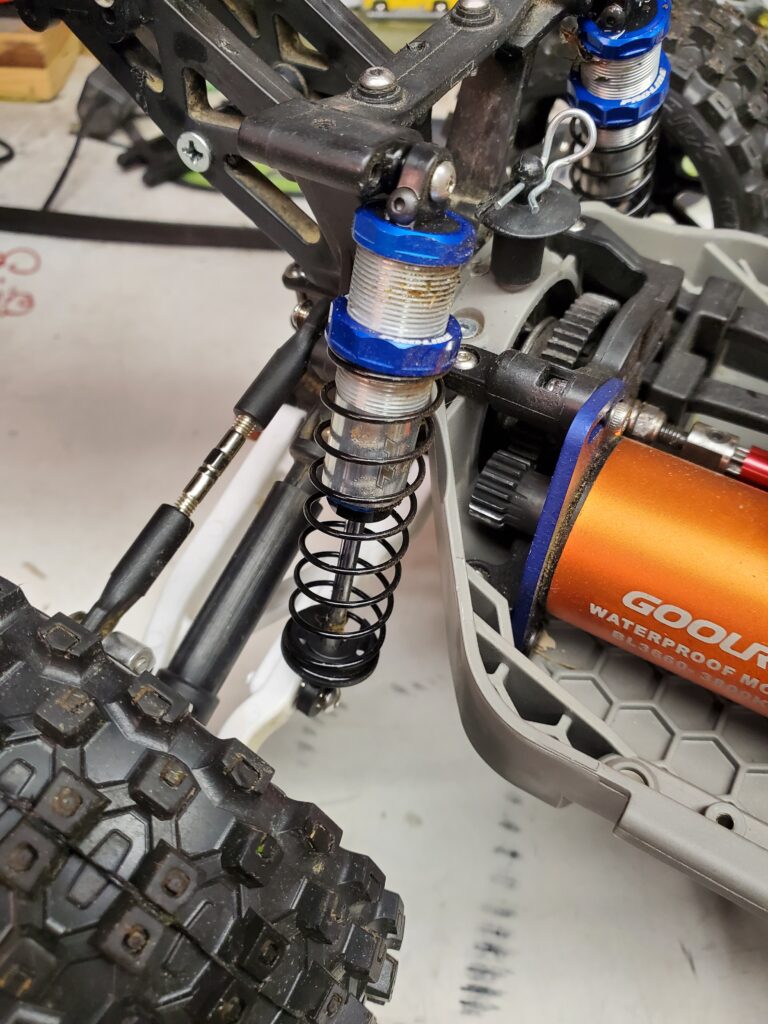
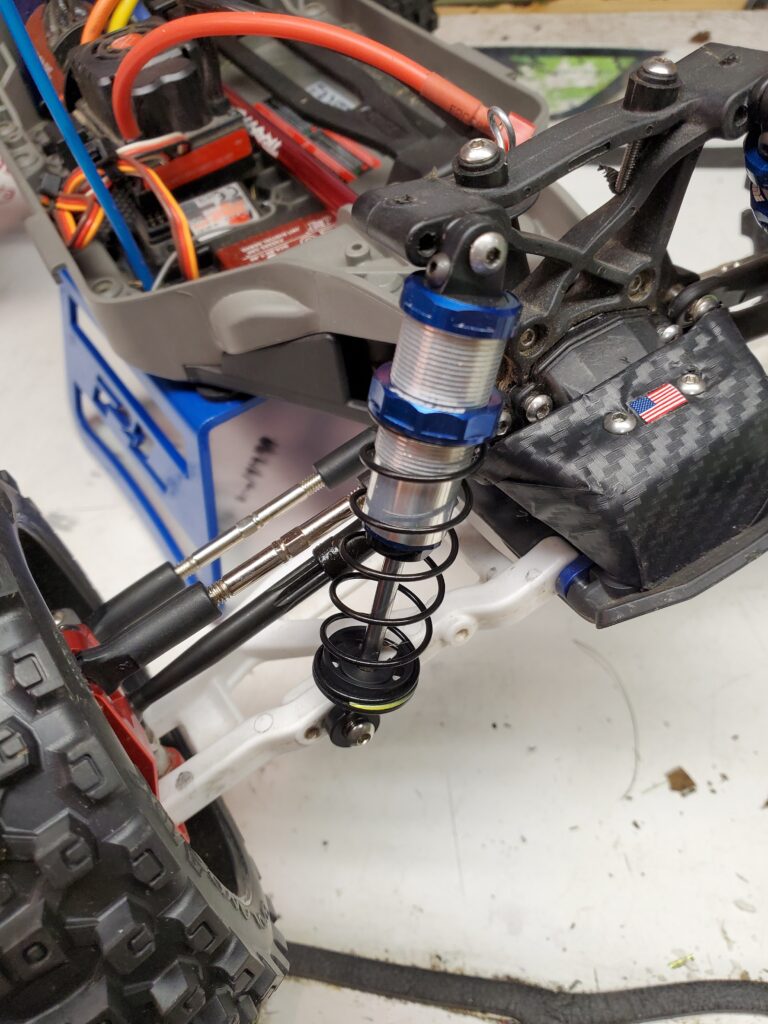
BUT HOW DOES IT PERFORM?
My hopes in building a V2 of the BackSlash were to end up with a car that spent more time on its wheels and less time waiting on me to flip is back over. The V1 was very top-heavy despite its low ride height and it liked to turtle with very little effort. The V2 gained up-travel without sacrificing down-travel which will help it not bottom out over every twig or rut. The chassis plate itself sits roughly an inch lower on the V2 and this is where the largest performance gain is found. Diving into corners the car plants the outside wheel and turns with authority. No waiting for weight to transfer, no excessive body roll, just predictable handling with a much higher limit of ability. The area where our track testing facility will be located has some rooted areas that are extremely fun with larger 1/8 MT’s but the smaller 1/10 SC trucks typically don’t like the size of the obstacles and end up on their roofs or worse, high-centered. The V2 launched over these roots with reckless abandon time after time, landing on all fours like a wet rag and driving away with confidence. The stock springs that Pro-Line includes with the Pro Spec’s feel very good with the weight of the V2 and didn’t leave me wanting to make any changes. Traction with the updated Badlands MX tires is phenomenal; grass, loose dirt, gravel and even concrete are no match for the updated tires. The siping of the MX tread pattern allows just enough flex to find traction without causing the tread blocks to squirm during hard cornering.
One issue has arisen with the dramatic uptick in traction and stability: heat. The motor is being worked much harder now that the car is able to stay on its wheels for extended periods of time. The reduction in wheelspin from low speeds also strains the power system with each deep squeeze of the trigger causing massive cogging and even a thermal shutdown of the ESC. Did I mention that the 5000mAh 50c pack i was using only lasted 7 minutes before hitting LVC? I believe that qualifies as “strained”. I will be ordering a dual fan setup for the motor soon and will also be going down a few teeth on the pinion just to be safe. For this test I had the car geared 19/54 and the acceleration was suffering. I will most likely switch to a 15t pinion to see how much that helps the heat issue.
Overall the car is lightyears beyond its former V1 self. The LCG conversion was simple and reasonably affordable considering the step up in performance that it provides. The other pieces are icing on the already sweet cake; the shocks and tires work together to propel the car forward no matter what terrain the car encounters while the new front driveshafts eliminate slop and provide the smoothest steering possible.
So what is next for the V2 you may ask? The car could use new driveshafts in the rear to match the front and possibly a beefier center shaft to handle a step up in power. The LCG chassis can accept a longer motor and the car is begging for more power than the 3660 sized 3800kV GoolRC motor can provide. Lower gearing is in the car’s near future but a switch to XO-1 MOD1 gearing may be on the distant horizon.
